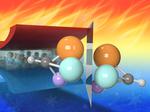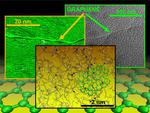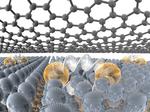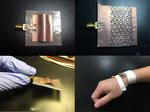Other

“The possibility of achieving room temperature superconductivity took a tiny step forward with a recent discovery by a team of Penn State physicists and materials scientists. The surprising discovery involved layering a two-dimensional material called molybdenum sulfide with another material …
“Repeated activity wears on soft robotic actuators, but these machines’ moving parts need to be reliable and easily fixed. Now a team of researchers has a biosynthetic polymer, patterned after squid ring teeth, that is self-healing and biodegradable, creating a …

“A new fundamental understanding of polymeric relaxor ferroelectric behavior could lead to advances in flexible electronics, actuators and transducers, energy storage, piezoelectric sensors and electrocaloric cooling, according to a team of researchers at Penn State and North Carolina State. Researchers …

“A new way of creating carbon fibers — which are typically expensive to make — could one day lead to using these lightweight, high-strength materials to improve safety and reduce the cost of producing cars, according to a team of researchers. Using …

“A multi-disciplinary collaborative relationship, developed between Penn State EMS Energy Institute researchers and a Pittsburgh-based start-up company, may hold the answer to reducing global greenhouse gas emissions while also paving the way to disrupt the chemical and material industries. Since …

“When it comes to increasing electric storage efficiency and electric breakdown strength — the ability of an electrical system to operate at higher voltage and temperatures with great efficiency — increasing one traditionally has led to a decrease in the other. Penn …

“The electricity that lights our homes and powers our appliances also creates small magnetic fields that are present all around us. Scientists have developed a new mechanism capable of harvesting this wasted magnetic field energy and converting it into enough …

“An atomically thin materials platform developed by Penn State researchers in conjunction with Lawrence Berkeley National Lab and Oak Ridge National Lab will open a wide range of new applications in biomolecular sensing, quantum phenomena, catalysis and nonlinear optics. “We …

“Penn State engineers say computational power is key to technology for smart bandages, health tattoos and artificial organs Bulky, buzzing and beeping hospital rooms demonstrate that monitoring a patient’s health status is an invasive and uncomfortable process, at best …

“A method to observe a new class of topological materials, called Weyl semimetals, was developed by researchers at Penn State, MIT, Tohoku University, Japan and the Indonesian Institute of Sciences. The material’s unusual electronic properties could be useful in …
